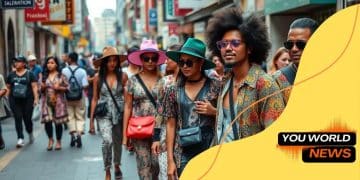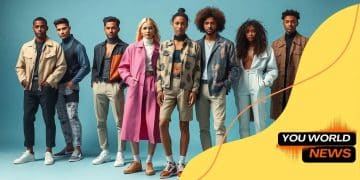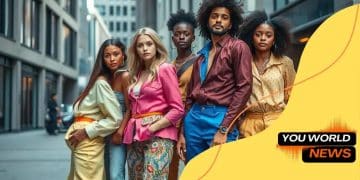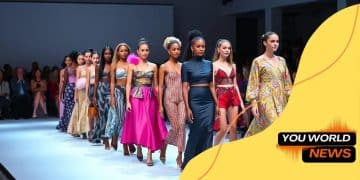Diversity and representation in the modeling industry

Diversity and representation in the modeling industry are essential for reflecting societal variety, driving consumer demand, and influencing brand strategies towards inclusivity across all demographics.
Diversity and representation in the modeling industry play a pivotal role in shaping perceptions and narratives. But have you ever wondered how this influence impacts your own shopping choices and societal views?
The importance of diversity in fashion
The importance of diversity in fashion cannot be overstated. When the industry embraces a wide range of voices, it enriches the narrative and allows for a fuller representation of society.
More than just aesthetics, diversity in the modeling industry reflects real-life experiences. It inspires consumers to see themselves in brands, influencing their purchasing decisions. When people from various backgrounds are represented, it leads to greater acceptance and appreciation of beauty in all forms.
Embracing Different Perspectives
Fashion thrives on creativity, and diversity fuels this creativity. Having models from varied ethnicities, body shapes, and ages presents a multitude of perspectives that can shape contemporary trends.
- Increased creativity in design
- Unique storytelling opportunities
- Broader audience reach
Companies that prioritize diversity often find themselves connecting better with their audience. This connection builds trust and loyalty, which are crucial for long-lasting business success.
Consumer Demand for Representation
Today’s consumers are more socially aware than ever. They expect brands to reflect the diversity of the world around them. This demand pushes brands to act, making diversity not just a trend but a requirement for survival in the market.
In conclusion, embracing diversity is not only a moral imperative but also a business strategy. The dialogue surrounding representation continues to grow, leading to a more inclusive future for the fashion industry.
Historical context of representation
The historical context of representation in the fashion industry reveals how far we have come and why diversity matters. For many years, fashion has often followed narrow definitions of beauty.
During the late 20th century, modeling was predominantly about specific body types and ethnicities. This exclusion shaped public perceptions of what was considered beautiful. However, societal movements began to challenge these norms.
Shifts in Representation
In the 1990s and early 2000s, the industry started to see changes, thanks to activists and models who pushed for more inclusive practices.
- Advocacy for greater diversity by models and designers
- Increase in representation of various races and sizes
- Growth of plus-size and gender-inclusive modeling
These shifts were gradual, often met with resistance, yet they laid the groundwork for the diverse representation we see today.
Impact of Social Movements
Social movements, such as the body positivity movement, further fueled the demand for broader representation. People began to question traditional beauty standards and emphasize the need for brands to reflect the world’s diversity.
Brands are now increasingly recognizing that consumers expect and demand representation that goes beyond just tokenism. Authenticity in marketing is becoming paramount, and brands must connect deeply with their audience.
Current trends in modeling diversity
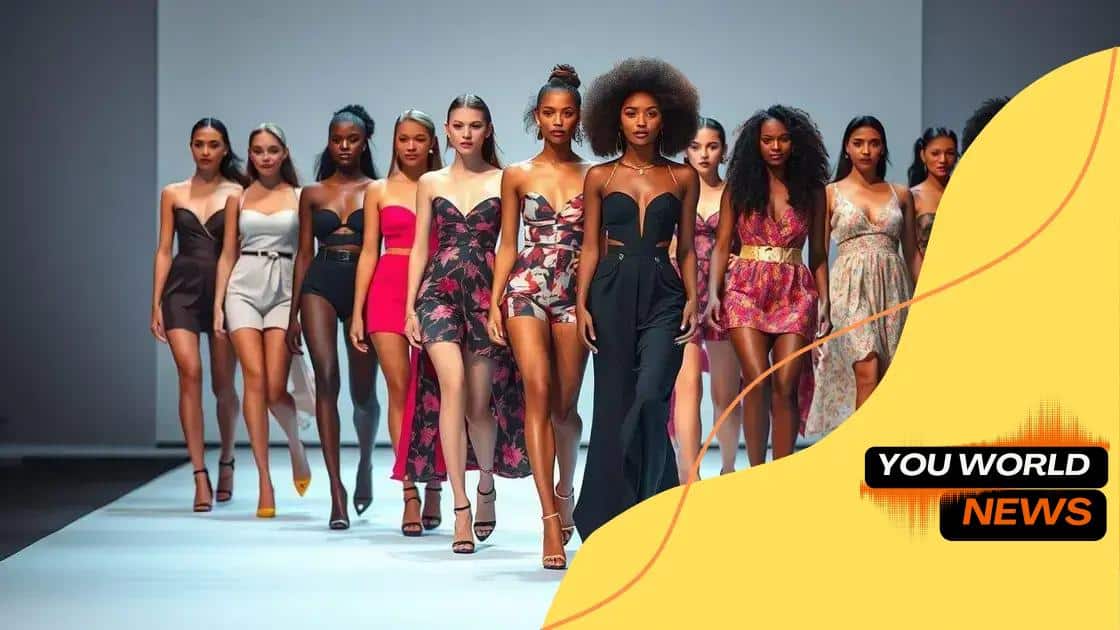
The current trends in modeling diversity reflect a significant shift in the fashion industry. Today, brands focus on inclusive practices that celebrate a variety of identities and body types.
One major trend is the representation of different ethnicities in advertising. Many brands are choosing models from diverse backgrounds to connect with a broader audience. This change is not just cosmetic; it reflects a deeper understanding of consumer values.
Expanding Body Types
Another notable trend is the inclusion of various body types in modeling. The industry is increasingly showcasing plus-size models, which helps to challenge traditional beauty standards. More brands are recognizing that beauty comes in all shapes and sizes.
- Brands are launching inclusive clothing lines
- Plus-size models are becoming more visible in campaigns
- Body positivity movements are reshaping marketing
As these changes continue, many companies are realizing that diversity in modeling not only meets consumer demand but also enhances brand loyalty.
Gender Inclusivity in Fashion
Gender inclusivity is also a vital part of current modeling trends. Non-binary and transgender models are breaking barriers, allowing for a greater representation of all gender identities. With this shift, fashion is moving towards a more accepting culture.
Brands that embrace this gender diversity not only attract a wider audience but also promote an environment of acceptance and understanding. This reflects societal changes where people feel empowered to express their true selves.
Challenges in achieving true representation
The challenges in achieving true representation in the modeling industry are significant and multifaceted. Despite progress, many barriers remain that hinder complete inclusivity.
One major challenge is the lingering stereotypes about beauty and body image. Many brands still prioritize narrow definitions of what is considered attractive, often favoring a certain body type, ethnicity, or age group. This can create a cycle where only a few models are repeatedly featured, limiting exposure for diverse talents.
Barriers in the Industry
Additionally, many models face challenges related to discrimination. Factors such as race, size, and gender can influence hiring decisions negatively. Many talented individuals do not receive opportunities due to preconceived notions and biases.
- Structural biases in hiring processes
- Limited exposure for diverse models in major campaigns
- Fear of alienating traditional consumer bases
Such barriers prevent brands from fully realizing their potential in diversity and representation.
The Role of Consumer Expectations
Furthermore, even as demand grows for diversity, some consumers may push back against rapid changes in representation. Brands may worry about alienating established customers who are accustomed to traditional imagery.
However, education and advocacy are helping to shift perceptions. More people are recognizing the value of seeing a broad spectrum of models that truly reflect society. Change may be slow, but the growing push for authentic representation continues to gain momentum.
How consumers can influence the industry
The way consumers can influence the industry is powerful and important. As customers demand more diversity, brands are paying attention and starting to change.
Consumers today want to see themselves represented in what they buy. Whether it’s clothing, beauty products, or advertisements, the push for inclusivity is growing. Social media plays a big role in this movement, where people can voice their opinions and share their experiences.
Empowering Change Through Advocacy
Many consumers are becoming advocates for diversity. They support brands that align with their values and often call out those that do not. Their choices can directly impact a brand’s reputation and sales.
- Supporting brands with diverse representation
- Sharing personal stories on social media
- Participating in campaigns advocating for inclusion
These actions can lead to a shift in how companies see their customers and what they prioritize in their marketing and hiring practices.
Feedback and Engagement
Feedback from consumers is critical. Many brands now actively seek input from their audience to understand their expectations better. This engagement helps companies to create products and marketing strategies that resonate with diverse groups.
When consumers express their views, they not only support their favorite brands but also inspire them to take a stand for authentic representation. As this trend continues, the modeling industry can become more inclusive and representative, reflecting the society we live in.
FAQ – Frequently Asked Questions about Diversity and Representation in the Modeling Industry
What role do consumers play in promoting diversity in modeling?
Consumers can influence brands by choosing to support those that prioritize diversity and by voicing their opinions on social media.
Why is representation important in the modeling industry?
Representation is vital as it reflects the diversity of society, allowing people to see themselves in media and fashion.
What are some current trends in modeling diversity?
Current trends include increased visibility for plus-size models, gender inclusivity, and the representation of different ethnicities.
What challenges does the modeling industry face regarding representation?
The industry faces challenges such as lingering stereotypes, discrimination, and the need to balance consumer expectations with inclusive practices.

